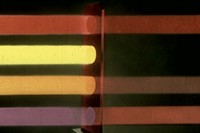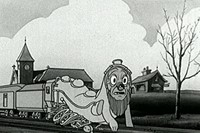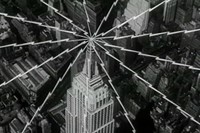Rick Prelinger tells AnOther about his latest foray into cut-and-paste filmmaking, The Lives of Energy, and the virtues of making new images out of old.
"It's folly to make too much out of originality; we add meaning to culture by remixing it."
The face of recycled film would be a listless one without the work of renegade archivist and lost footage life-giver, Rick Prelinger. In 1983, he opened the largest privately held collection of American ephemeral film, resuscitating the remix technique of mashup cinema with can after can of neglected footage - most of it discovered in sites as prosaic as the rubbish skip or street.
His archive has since become a vital source of content for filmmakers who fashion new and innovative moving image art out of pre-existing material. Their work forms a kaleidoscopic aesthetic known variously as recycling, appropriation, cutup and remix, and this month the AV Festival pays tribute to the technique with a Recycled Film Symposium dedicated to the art form and how online access to film archives has affected its evolution.
During the Symposium, Prelinger will speak and screen alongside celebrated recycler Craig Baldwin, the legendary Kenneth Anger, and the writer Iain Sinclair. As a prelude to his keynote speech, he tells AnOther about his latest foray into cut-and-paste filmmaking, The Lives of Energy, and the virtues of making new images out of old.
Rick Prelinger: People have been incorporating found or pre-existing material into films since almost the beginning of cinema; there is found footage in Buñuel's L'Âge d'or, and archival clips populate independent and experimental films since the thirties. However, things got a little busy in the Seventies. You see a slow transition from very traditional, referential uses of archival material into two distinct forks: a commercialized, budget-driven use of archives and a kind of "post-modern" sensibility owing its origins to the avant-garde.
I take some of the credit for injecting ephemeral films (advertising, educational, industrial and amateur) into the footage mix. Before Prelinger Archives opened up on the last day of 1983, this material wasn't easily available and was little used.
The other trend I want to point out is that remixing images is really a manifestation of very traditional folk artmaking, like quilting - which itself is an ancestor of remixing - or scrapbooking or collage.
My new film The Lives of Energy, like my 2005 film Panorama Ephemera, is a "slow collage." Collage has migrated from the arts and crafts we associate with folk culture into digital culture, speeding up and fragmenting along the way. This film speaks not in syllables or phonemes like the work of other, faster-paced filmmakers, but in paragraphs. It treats the life history of energy by breaking it up into epochs and presenting a kind of narrative built around the changing relationship of humans to energy.
Emma Paterson is a freelance film writer and writes for Dazed & Confused, Another and Little White Lies






